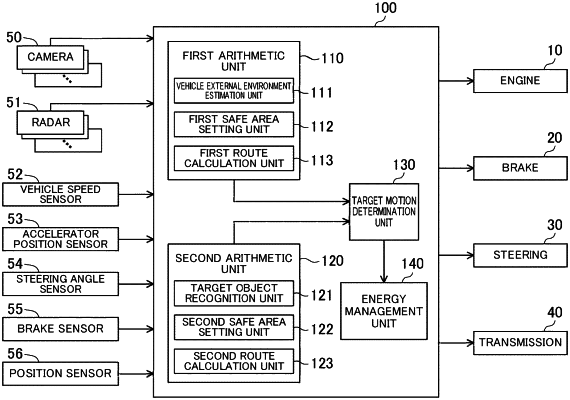| CPC B60W 30/09 (2013.01) [B60W 50/0098 (2013.01); B60W 2050/0028 (2013.01); B60W 2554/20 (2020.02)] | 18 Claims |

|
1. An automotive arithmetic device hosted on a motor vehicle, the automotive arithmetic device comprising:
circuitry configured to
estimate a vehicle external environment with a learned model that was trained by deep learning based on an output from an information acquisition device that acquires information of the vehicle external environment;
calculate a first candidate route based on an estimation result previously obtained;
recognize a target object outside the motor vehicle based on the output from the information acquisition device according to a predetermined rule set without using deep learning;
set a static safe area which is an area where the target object is avoidable based on a recognition result that was previously provided by the circuitry; and
determine a target motion of the motor vehicle by application of the first candidate route and the static safe area, wherein
the circuitry
sets the first candidate route as a route that the motor vehicle should take and determines the target motion of the motor vehicle so that the motor vehicle takes the first candidate route under a condition the first candidate route is entirely within the static safe area, and does not select the first candidate route as the route that the motor vehicle should take under a condition the first candidate route at least partially lies outside the static safe area,
calculates a second candidate route that passes the static safe area only, and
selects the second candidate route as the route that the motor vehicle should take and determines the target motion of the motor vehicle so the motor vehicle takes the second candidate route under a condition the first candidate route at least partially deviates from the static safe area.
|